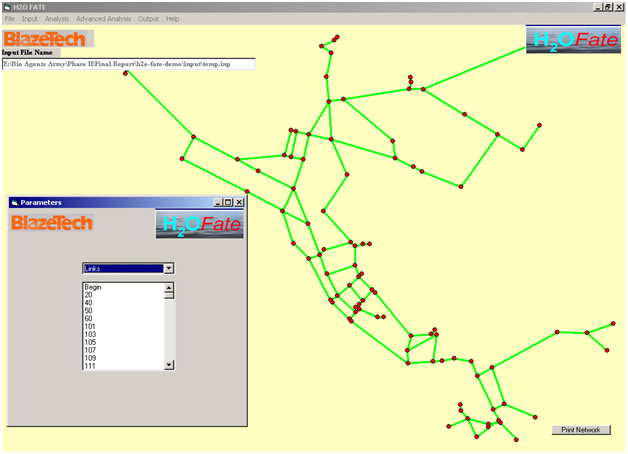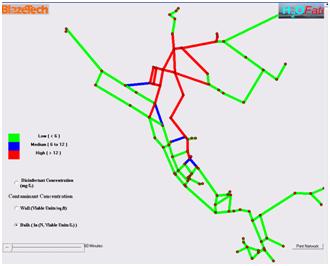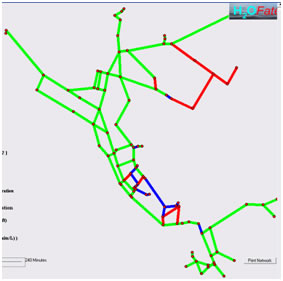H2OFate
H2OFate predicts the fate and transport of chemical, biological and radiological agents, contaminants (including disinfection byproducts and pharmaceutical compounds) in drinking water distribution systems. Such contaminants may enter the network either through accidents or intentional releases. H2OFate includes models for the reactions of contaminants and residual disinfectant with each other (in bulk water and at the pipe wall) and their adhesion/reactions with the pipe walls.

H2OFate’s contaminant list includes the following categories:
- Bacteria such as Bacillus anthracis spores, helicobacter pylori, E. coli and various strains of mycobacteria.
- Protozoa such as Cryptosporidium parvum oocysts and Giardia lamblia cysts
- Viruses such as polio virus, rotavirus and reovirus
- Chemical agents such as GA, GB and VX
- Disinfection byproducts such as trihalo methanes
Currently H2OFate has over 40 contaminants. The generic nature of the software enables addition of new contaminants to the list. Potential applications of the H2OFate software developed here are outlined below:
- Vulnerability assessment to terrorist attacks, accidents, natural disasters and operational malfunctions.
- Development of risk management plans, emergency procedures & countermeasures for contaminants in water systems.
- Guidance in the placement of sensors for effective monitoring and pre-positioning of treatment equipment (e.g., chlorine booster stations) for decontamination.
- Monitoring the networks for contamination and malfunctions, and activate appropriate procedures to contain and mitigate the hazard.
- Planning and design of new water distribution systems and improving the safety and security of existing ones.
- Compliance with various rules such as Stage 2 Disinfection ByProducts Rule.
- It can be used as a research/ educational tool for environmental engineers and can be used to improve awareness through community outreach programs.
Sample Output
Hazard contours for a 3-hour release of a contaminant into a drinking water distribution network at a given node. Green, blue and red indicate low, medium and high

60 minutes after the start of release

240 minutes after the start of release
